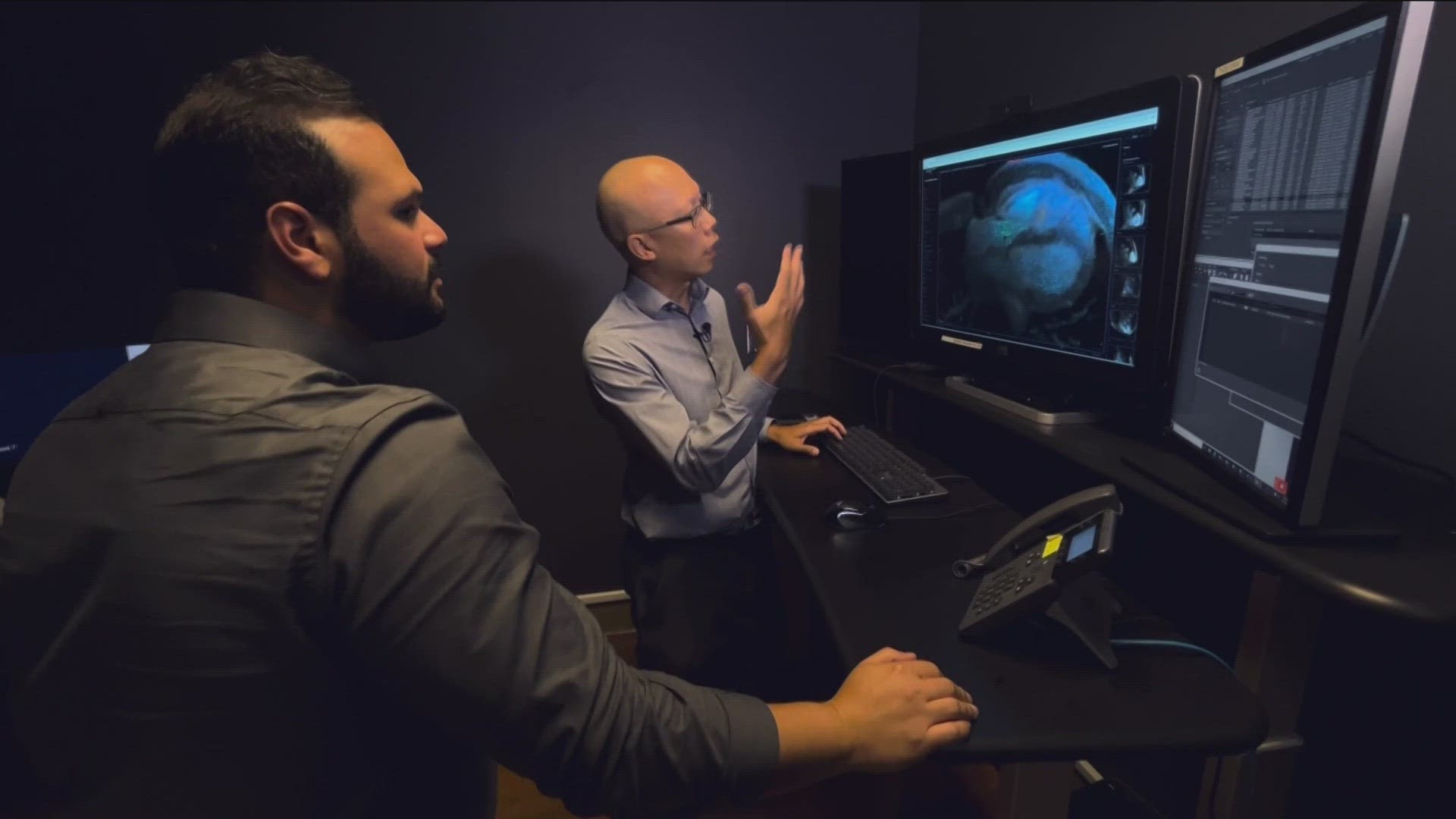SAN DIEGO — Artificial intelligence has quickly become a household term, from Chat GPT to art, music, and even scams CBS 8 has warned of. Now, AI is becoming a part of healthcare.
It's a change and innovation already happening inside the walls of the Jacobs Medical Center at UC San Diego Health in La Jolla.
Dr. Albert Hsiao is the interim division chief for cardiothoracic radiology at the hospital and is a lead of UCSD's artificial intelligence lab. CBS 8 met him in a radiology viewing room where he marries his two titles.
"This patient has really complicated anatomy," he explained as he showed us an intricate scan of a human heart with congenital disease. The scan showed a hole in the heart and a valve not operating properly.
"This red over here is an abnormal connection between what's called the aorta and the right atrium and that's a hole in the heart that needs to be repaired," Hsiao elaborated. The issues shown in bright red, blue, and green colors and arrows, were highlighted with the help of artificial intelligence.
"If I take off that correction, you can see the arrows aren't really moving in the right direction so there's all this what's called phase error," Hsiao said. "We have AI algorithms that basically correct that phase error."
Hsiao says the process of taking these scans of the human body would take hours when done traditionally, necessitating the doctor fiddling with the scanner, working with technicians, and reviewing scans as they go. Hsaio says the algorithm he created and used helped him take the scan in about 10 minutes, without requiring he even be physically in the building.
"My expertise can be shared across multiple places and that's what AI allows us to do," he said.
Outside radiology, UCSD Health is employing artificial intelligence to help with administrative duties. Chief Medical Officer and Chief Digital Officer Dr. Chris Longhurst says AI is now helping predict how many patients they can expect on any given day, how much staff to have on hand, and even how the weather could affect that.
"We have a formula here we’ve been using for years to try to predict what the census would be based off known admissions, discharges, schedules," he explained. "But when we added in this AI base… this gives us a much more accurate forecast at 24-48 hours out."
AI is already powering parts of your patient experience too. Right now, almost 100 UCSD Health doctors are in a pilot program using AI to draft online messages with patients and documents like insurance appeals letters. Longhurst says doctors ultimately review and approve any messages (which carry a note alerting AI was involved) before sending to patients, but the AI is showing it could be a helpful tool to save time and reach more people.
"The challenge is time because we rarely have the time to sit down and type or dictate all of those messages," Dr. Longhurst said. "So if the chatbot can come up with draft messages that are close to what you would want to do 90% to 95% of the time, it’s saving the physician time and potentially after-hours work."
Longhurst says since the clinical components of medical files--not including billing or audit data-- are mostly text, language models like Chat GPT are proving useful in helping manage them.
Along with the novelty and innovation, artificial intelligence has brought privacy and security concerns, especially with data as sensitive as one's medical records. Dr. Longhurst says they have built several safeguards into their use of AI.
"We take security of our patient data with the utmost seriousness. Nothing is more important than the trust our patients have given us..." he said. "When we work with partners to do AI, we do that in our environment, not in the partner's environment, so that data doesn’t leave our hospital."
Similar safeguards are already evident in some futuristic innovation. During UCSD's Digital Health Symposium in May, UCSD staff played with a robot doling out medical advice. However, the robot stopped itself from going too far, at one point saying it "...cannot treat medical conditions as I am not a medical professional."
Patients aren't interacting with the robot right now, but it's a peek into a future Longhurst can see coming as part of the AI revolution. He points out wearable tech many of us already own-- like fitness trackers and Apple Watches-- which in the future he sees could become tools allowing doctors to monitor patients health from afar or in rural areas.
"Do I think we'll see robot doctors in 20 years or 50 years? I'm not sure that's the case," Longhurst said. "I do think we will see robots with AI doing all sorts of tasks from helping to care for patients, providing support, and maybe even keeping our seniors company as they progress through stages of dementia."
Earlier this year, UCSD Health received a $22 million grant from philanthropists Joan and Irwin Jacobs. Hospital officials say that money will pay for a "Center for Health Innovation" at the Jacobs Medical Center, which would ultimately use AI in a "Mission Control Center" to monitor patients and track disease outbreaks.
WATCH RELATED: AI technology is helping San Diego firefighters tackle fires quickly

